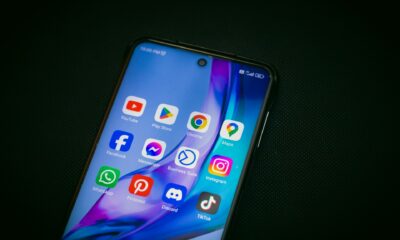Tech
Wafer Thin Phones Are Stylish, But At What Cost To Consumers?

When Apple revealed its iPhone 17 Air last week and Samsung showed off its Galaxy S25 Edge, both brands proudly claimed bragging rights to the thinnest smartphones ever made. On paper, this is an engineering marvel. But on the ground, many South Africans are asking: do we really need our phones to be this thin?
Design Over Practicality
Smartphones have long outgrown their role as simple calling devices. They’re now our wallets, cameras, gaming consoles, and health trackers. Yet, by chasing millimetres, manufacturers are compromising what matters most to everyday users: battery life, durability, and camera quality.
A slimmer phone often means a smaller battery, weaker cooling, and more fragile build. And let’s be honest sitting on your R30 000 phone shouldn’t leave you worried it might bend.
The Tech Behind The Hype
Both Apple and Samsung are banking on their next big leap in chip technology. By 2026, Apple plans to roll out its A-series processors on a 2-nanometre process, while Samsung will follow suit. This step forward promises better performance with lower energy consumption, potentially clawing back some of the battery life lost to slimmer designs.
But here’s the kicker: all that space saved by going thinner could have housed a bigger battery. Instead, consumers get devices that look stunning on launch day slides but struggle to keep up in daily life.
What South Africans Think
Scroll through X or TikTok, and you’ll see the same sentiment: South Africans love sleek design, but not at the cost of practicality. “We want power banks OUT of our handbags, not in them,” one Joburg user posted. Another joked, “Apple sells us the thinnest phone, then sells us the thickest MagSafe battery pack. Make it make sense.”
The irony hasn’t gone unnoticed. Accessories like bulky protective cases and battery packs a multi-billion-rand industry are thriving because the very design choices manufacturers celebrate are impractical for daily use.
A Local Perspective
In South Africa, where load shedding often disrupts daily life, battery performance is not a luxury it’s a necessity. People want phones that can survive through power cuts, WhatsApp calls, and late-night streaming, not ones that need recharging before supper.
The Bottom Line
Wafer-thin phones may win design awards, but they don’t win the consumer satisfaction race. Until brands start prioritising the basics reliable battery life, durable builds, and cameras that shine South Africans are better off sticking with sturdier devices. After all, the best phone isn’t the thinnest one; it’s the one that lasts through the day without a panic charge.
Source:Tech Central
Follow Joburg ETC on Facebook, Twitter , TikTok and Instagram
For more News in Johannesburg, visit joburgetc.com

















